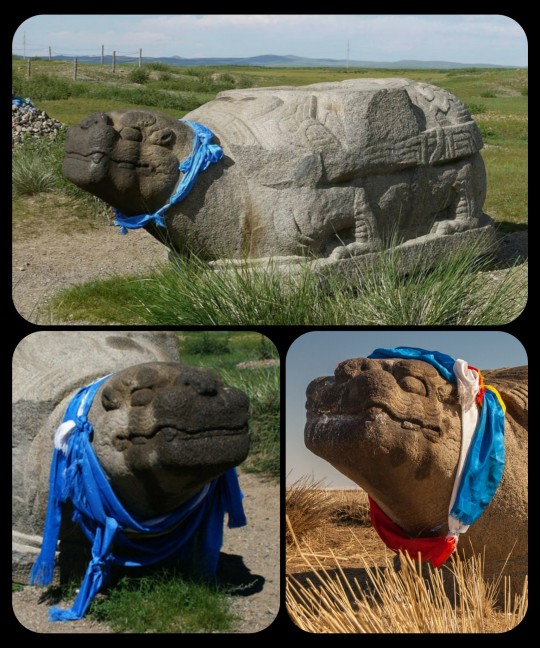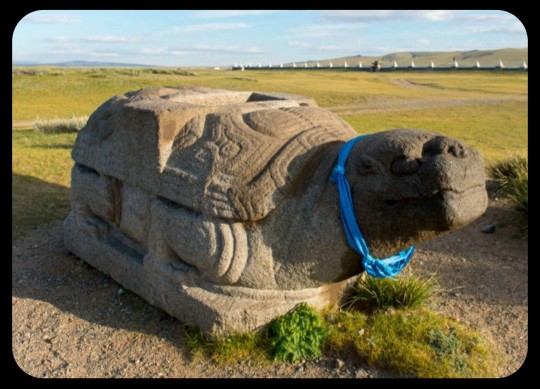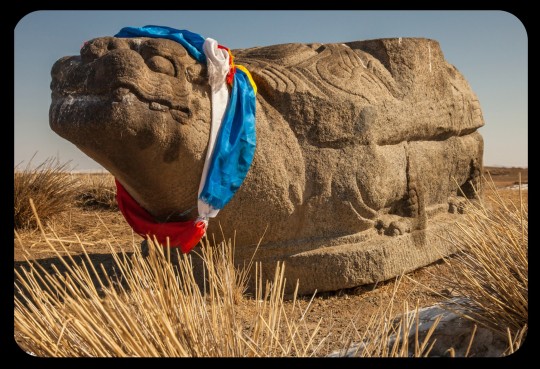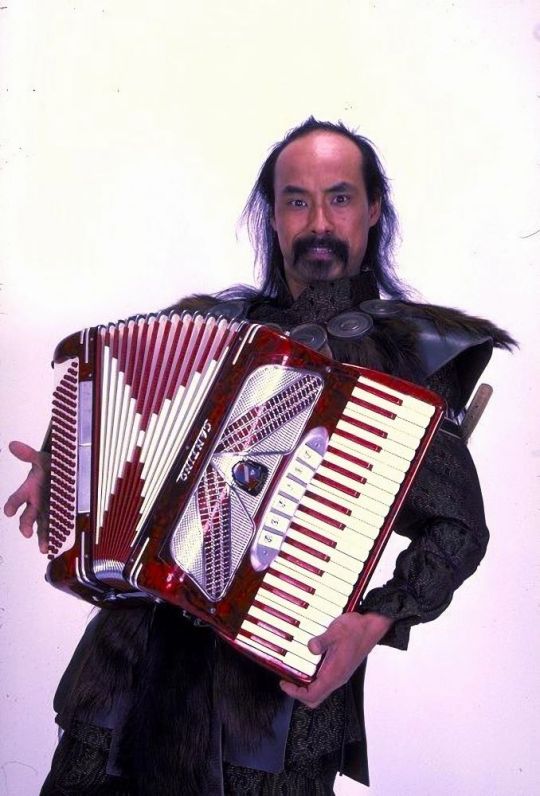#Genghis khan
Explore tagged Tumblr posts
Text
What with Federation culture being so bent for historical recreation and holodeck malfunctions spawning sapient holograms left and right, I have to imagine at least one of those inadvertently sapient holograms themselves went on to become a historian. Imagine one of those inadvertently sapient holograms studying their own namesake and coming to the conclusion that the present academic consensus – upon which they themselves are based – is incorrect. Imagine hologram Genghis Khan rocking up to the podium at the historical society symposium like "you fuckers got my personality all wrong and I'm going to make it everybody's problem".
4K notes
·
View notes
Text
Time Travel Question 61: Middle Ages and Much Earlier
These Questions are the result of suggestions from the previous iteration.
This category may include suggestions made too late to fall into the correct grouping.
Please add new suggestions below if you have them for future consideration.
#Time Travel#Mastodons#Megafauna#Triceratops#Dinosaurs#Pre-History#Dimetrodons#Saber-toothed Cats#Smilodon#Chinggis Khan#Genghis Khan#Mongols#Temüjin#Mongolian History#13th Century#Medieval History#Middle Ages#Athens#Ancient World#Canaanites#Ancient Religions#History of Religion#West Asia#Denisovans#Homins#Paleolithic#Prehistory#The Ghana Empire#Ghana#Ghanata
315 notes
·
View notes
Text

758 notes
·
View notes
Text
280 notes
·
View notes
Photo

How many years an area was ruled by a descendant from Genghis Khan between 1200-1847
154 notes
·
View notes
Text
Khutulun, Mongolian Princess Warrior

#digital art#anime#anime and manga#anime art#artists on tumblr#anime aesthetic#anime drawing#anime style#art#artwork#history#world history#history tag#mongolia#mongol empire#mongol history#genghis khan#khan#khutulun#digital art#digital illustration#digital drawing#digital painting#drawing#lineart#my art#art style#art tag#illustration#art on tumblr
194 notes
·
View notes
Text
Stone Turtle of Karakorum, Mongolia, c. 1235-1260 CE: this statue is one of the only surviving features of Karakorum, which was once the capital city of the Mongol Empire

The statue is decorated with a ceremonial scarf known as a khadag (or khata), which is part of a Buddhist custom that is also found in Tibet, Nepal, and Bhutan. The scarves are often left atop shrines and sacred artifacts as a way to express respect and/or reverence. In Mongolia, this tradition also contains elements of Tengrism/shamanism.

The city of Karakorum was originally established by Genghis Khan in 1220 CE, when it was used as a base for the Mongol invasion of China. It then became the capital of the Mongol Empire in 1235 CE, and quickly developed into a thriving center for trade/cultural exchange between the Eastern and Western worlds.
The city attracted merchants of many different nationalities and faiths, and Medieval sources note that the city displayed an unusual degree of diversity and religious tolerance. It contained 12 different temples devoted to pagan and/or shamanistic traditions, two mosques, one church, and at least one Buddhist temple.
As this article explains:
The city might have been compact, but it was cosmopolitan, with residents including Mongols, Steppe tribes, Han Chinese, Persians, Armenians, and captives from Europe who included a master goldsmith from Paris named William Buchier, a woman from Metz, one Paquette, and an Englishman known only as Basil. There were, too, scribes and translators from diverse Asian nations to work in the bureaucracy, and official representatives from various foreign courts such as the Sultanates of Rum and India.
This diversity was reflected in the various religions practised there and, in time, the construction of many fine stone buildings by followers of Taoism, Buddhism, Islam, and Christianity.
The prosperous days of Karakorum were very short-lived, however. The Mongol capital was moved to Xanadu in 1263, and then to Khanbaliq (modern-day Beijing) in 1267, under the leadership of Kublai Khan; Karakorum lost most of its power, authority, and leadership in the process. Without the resources and support that it had previously received from the leaders of the Mongol Empire, the city was left in a very vulnerable position. The residents of Karakorum began leaving the site in large numbers, until the city had eventually become almost entirely abandoned.
There were a few scattered attempts to revive the city in the years that followed, but any hope of restoring Karakorum to its former glory was then finally shattered in 1380, when the entire city was razed to the ground by Ming Dynasty troops.
The Erdene Zuu Monastery was later built near the site where Karakorum once stood, and pieces of the ruins were taken to be used as building materials during the construction of the monastery. The Erdene Zuu Monastery is also believed to be the oldest surviving Buddhist monastery in Mongolia.

There is very little left of the ruined city today, and this statue is one of the few remaining features that can still be seen at the site. It originally formed the base of an inscribed stele, but the pillar section was somehow lost/destroyed, leaving nothing but the base (which may be a depiction of the mythological dragon-turtle, Bixi, from Chinese mythology).
This statue and the site in general always kinda remind me of the Ozymandias poem (the version by Horace Smith, not the one by Percy Bysshe Shelley):
In Egypt's sandy silence, all alone,
stands a gigantic leg
which far off throws the only shadow
that the desert knows.
"I am great OZYMANDIAS," saith the stone,
"the King of Kings; this mighty city shows
the wonders of my hand."
The city's gone —
naught but the leg remaining
to disclose the site
of this forgotten Babylon.
We wonder —
and some Hunter may express wonder like ours,
when thro' the wilderness where London stood,
holding the wolf in chace,
he meets some fragment huge
and stops to guess
what powerful but unrecorded race
once dwelt in that annihilated place
Sources & More Info:
University of Washington: Karakorum, Capital of the Mongol Empire
Encyclopedia Britannica: Entry for Karakorum
World History: Karakorum
#archaeology#history#anthropology#artifact#ancient history#mongol empire#mongolia#karakorum#middle ages#ancient ruins#art#turtle#bixi#ozymandias#poetry#mythology#genghis khan
248 notes
·
View notes
Text

Through generations.
#mongol empire#mongol history#mongolia#art#batu khan#batu#the golden horde#genghis khan#temujin#nomadic#steppe#Mongols
30 notes
·
View notes
Text
Gonna go raid the neighbouring settled agricultural people while on horseback. Anyone need anything?
#its the neurodivergency#autism#neurodivergent#funny#dothraki#genghis khan#khal drogo#mongol empire#the huns#silly goofy ahh#sillyposting#anyone want some#history#honse#horse
40 notes
·
View notes
Text

Majima has some downtime.
(This is the music video he's watching).
28 notes
·
View notes
Text

Al Leong, Bill & Ted's Excellent Adventure (1989)
134 notes
·
View notes
Text
In 1879, Billy the Kid got in a bar fight after cheating at poker. He was aided by two teens who turnned out to be time travelers. He became their right hand man as they went through time picking up historical figures and he took a particular shine to Socrates. Then Billy the Kid and the historical figures Napoleon, Socrates, Sigmund Freud, Beethoven, Joan of Arc, Genghis Kahn, and Abraham Lincoln are brought to 1988 to spent the day in San Dimas, CA (Bill and Ted’s Excellent Adventure, Flm)

#nerds yearbook#first appearance#sci fi movies#time travel#bill and ted's excellent adventure#bill and ted#chris matheson#1879#the old west#1988#san dimas#ed solomon#stephen herek#dan shor#billy the kid#bill preston#bill s preston esquire#alex winter#ted logan#keanu reeves#socrates#tony steedman#george carlin#rufus#terry camilleri#napoleon#rod loomis#sigmund freud#al leong#genghis khan
20 notes
·
View notes
Text

lock stock and teardrops i'll be gone or happy new sponge day imaginary constructs
my streak of perfect summer fruits ended with some mealy nectarines and a sour plum
last weekend i hiked a gorge and turned my legs into rubber
yesterday i busted my toe sideways while walking to the kitchen so i can't ramble today
last night i ate pork egg rolls and a frozen three musketeers bar for dinner
my usual breakfast is a pot of black coffee as my stomach protests any effort beyond that until three or four hours after we get up


#roger miller#wednesday on tuesday#randy describes his moustache#memento mori#thank you old sponge for your able dishwashing assistance and quiet fellowship you will be missed#pythons#graham crackers#fossilized atomic blasts#quarrelsome squirrels#recreational vandalism#flying wallendas#heirlooms#introverts#banned from the pub#fingers#broken toes#cemetary memories#the castle#the galaxy and the ground within#talullah gorge#genghis khan#biloxi beach#church clothes#but one never knows#second blue moon epoch#first summer#next message
29 notes
·
View notes
Text
Ppl calling Ares a feminist for being a good dad to his daughters reminds me of that one person saying that Genghis Khan was a feminist bc he was used his daughters for his conquests.
#treating your children like ppl is the bare minimum#greek mythology#ancient greek mythology#greek pantheon#ares#ares god of war#ares deity#ares greek god#genghis khan
20 notes
·
View notes
Photo

Joan of Arc moments before getting burned at the stake...again...this time by her peers, 2023 (colorized)
#joan of arc#candide sampson#clone high#everybody hates joan#clone alone#colorized#f u candide#abe lincoln#jfk#vincent van gogh#genghis khan#george washington carver#clone high harriet tubman#clone high cleo#frida kahlo#clone high frida
157 notes
·
View notes
